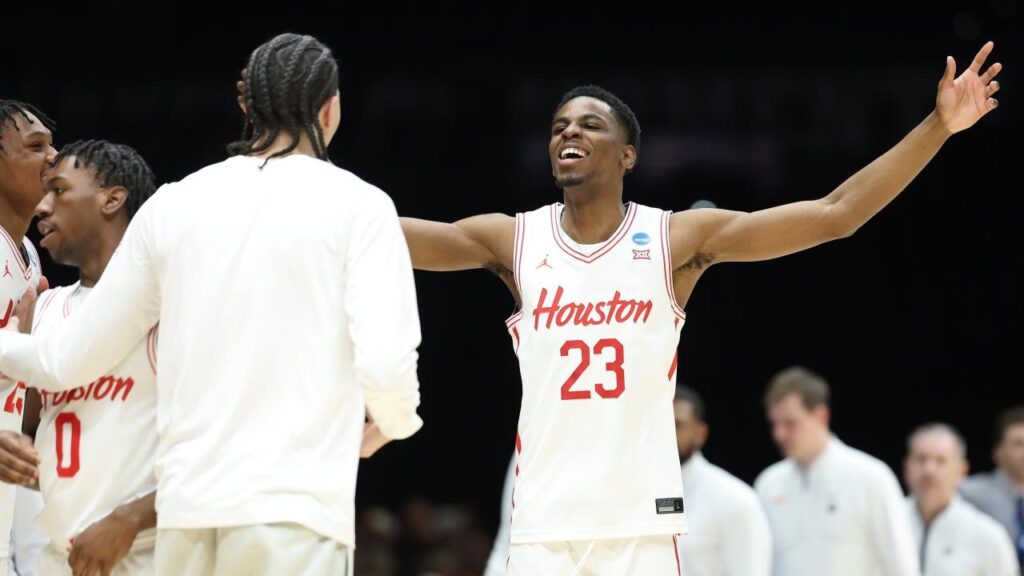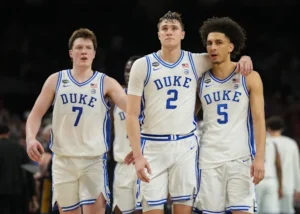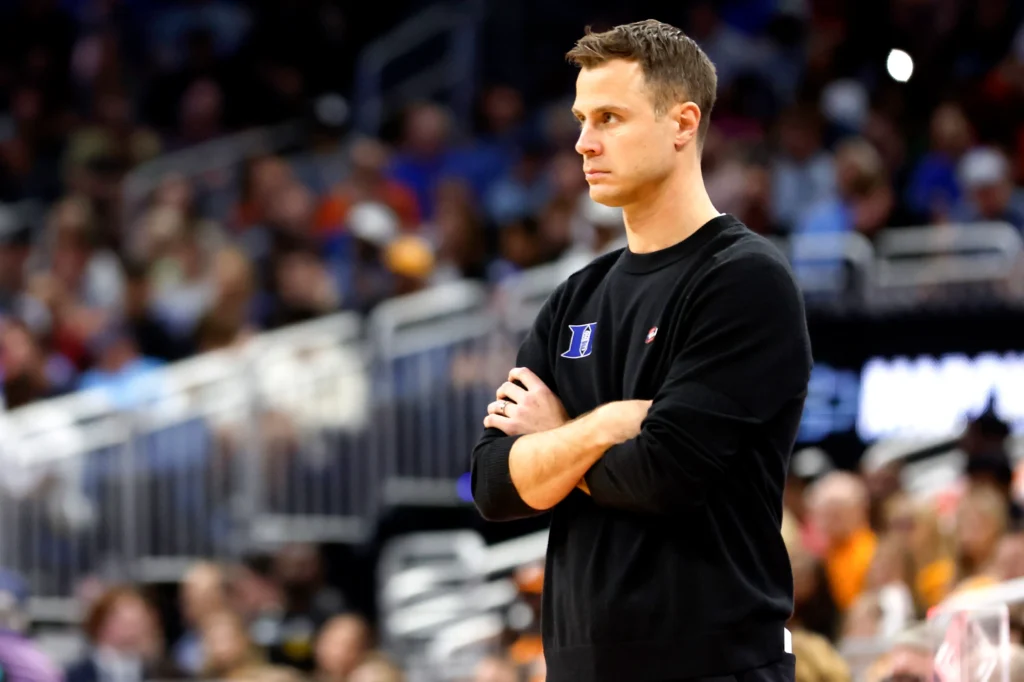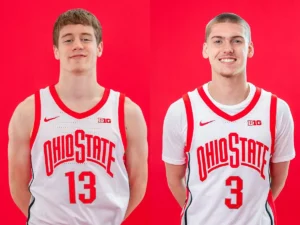
In April 2025, Andy Katz released his much-anticipated “way-too-early” Power 37 rankings for the upcoming 2025–26 men’s college basketball season—and topping the list was none other than the University of Houston. Ranked ahead of perennial favorites like Duke, Purdue, and UConn, Houston secured the coveted number one spot in this speculative and highly discussion-provoking assessment.
Speculating on next season this early is always risky—but Katz’s bold move takes into account more than just the final standings of the previous season. It reflects a careful evaluation of returning talent, new recruits, coaching stability, and program momentum. Houston’s rise to the summit of the pre-season projection reflects a program that has consistently punched above its weight, built a rugged culture under coach Kelvin Sampson, and established itself as a national contender over the past few seasons.
To better understand why Katz selected Houston as his top pick, it’s helpful to look at the context behind that ranking. In his Power 37, Katz placed Duke at number two, Purdue at three, Florida at four, and Texas Tech at five—with other blue bloods like UConn, St. John’s, Alabama, Louisville, and Michigan consolidating the top ten. Certain rankings—such as Houston’s—appear notable, but not without justification given the program’s recent performances, including deep NCAA tournament runs and a strong Big 12 campaign. Credit is due, Katz inferred, to Houston’s ability to meld defensive tenacity with consistent execution on offense, a balance that’s difficult to replicate at any level.
A defining trait of Houston’s success has been its high-octane defense. In Katz’s previously released mid-season Power 36 rankings from February 2024—during which Houston was ranked second behind UConn—he praised the Cougars’ defensive clout, particularly following their wins against Texas and other conference rivals. That version of Houston was lauded for smothering defenses and imposing their will. If their upward trajectory continues, Katz might have even more lofty expectations come next winter.
Looking at the broader field, Katz’s top ten includes a mix of traditional powerhouses and emerging contenders. Duke and Purdue offer size and talent; Florida and Texas Tech bring strong coaching and experience; UConn has carved its own path as an elite Big East force; while St. John’s and Alabama carry momentum from recent breakout seasons. Stability at the top is contrasted by the volatility of the mid-tier programs, but Houston emerges as the one team whose current positioning seems earned.
Interestingly, Katz acknowledges a queue of “under consideration” teams—12 programs that didn’t quite make the 37 but are on his radar for possibility. These include San Diego State, Indiana, USC, Nebraska, Memphis, Clemson, Syracuse, Villanova, Oklahoma State, Notre Dame, Dayton, and VCU. Each carries potential, but Katz tilted the scales in Houston’s favor, suggesting that the Cougars’ immediate outlook is stronger.
The rationale behind Houston’s rise includes multiple converging factors. First is roster continuity. Teams that retain key contributors—whether veterans or impactful newcomers—hold a strategic advantage. Houston returns a deep core, likely featuring already experienced players accustomed to coach Sampson’s rigorous standards. Even expanding recruitment pipelines, highlighted by strong local and transfer classes, boost confidence. Add to that the intangible momentum of past success, and it becomes clear why Katz believes Houston is a bubble of stability in a sea of uncertainties.
Another contributing element: Houston lives by defense. In every season since Sampson took over, Houston has prioritized and delivered defensive performance. Inches matter in the Big 12, and Houston hoards those inches. Their ability to shut down opponents, force takeaways, and control tempo must weigh heavily in Katz’s calculus—and the February 2024 Power 36 index corroborates that this defense-first philosophy elevated Houston near the top midseason.
Moreover, Houston’s pathway has been paved with postseason success. NCAA tournament experience matters, and Houston has firmly stamped its name among the elite over the past several seasons. Katz has covered every Final Four since 1992 and the NCAA tournament since 1986. He understands that past performance in March often projects into next season’s confidence and national standing. Houston’s ability to perform on the grand stage cannot be underestimated.
Yet, as Katz’s tone suggests, these projections are early, perhaps premature. “Way-too-early” rankings are meant to spark conversations, not define final outcomes. Injuries, transfers, coaching changes, and player development over the summer can dramatically shift teams up or down. And after April, basketball moves fast—rosters morph, surprise programs emerge, and preseason darling statuses come crashing down by winter. Katz knows this too, which is why he keeps the tone speculative yet confident.
Despite that caveat, the fact remains: Katz—and the broader college basketball world—believes Houston is perfectly positioned to dominate next season. That projection should excite the Houston fanbase while serving notice to the rest of the nation: the Cougars are back at the apex of the sport.
Looking beyond Houston, the rankings for Duke and Purdue signal teams hungry for redemption. Duke, consistently near the top, advances on talent and recruiting; Purdue brings size, Edey-centered offense, and Big Ten poise. Florida and Texas Tech lean on defensive models akin to Houston’s, but with different strategic angles in tempo and offense. UConn, back in national title discussion thanks to recent Final Four appearances, continues its Big East dominance.
Some rankings raise eyebrows—St. John’s at seven, Louisville at nine—but Katz supports every position with rational expectations of returning talent, coaching impact, and offseason momentum. Alabama and Michigan in the top ten highlight the SEC and Big Ten’s recent ascents in the national hierarchy, banners of divergence from the traditional Big East/Big 12/ACC axis.
Meanwhile, Katz’s watchlist of bubble-watchers reflects programs building quietly but inching upward. San Diego State and Indiana, traditional mid-major stables with big-time potential; USC riding the Pac-12 wave; Memphis energizing a national fanbase; Syracuse, Clemson, and Villanova primed for conference reboots; Nebraska, Oklahoma State, Notre Dame, Dayton, VCU—all churning under the radar with sustained foundations.
In essence, Katz’s projection places Houston as the imagined summit of a collegiate empire, but with a series of challengers waiting in the wings. It suggests that Kelvin Sampson is sculpting a program that mirrors the discipline and intensity once attributed to coaches like Rick Pitino or Rick Barnes: consistent, tough, and hungry. Houston seems to fit that description to a tee.
To skeptics, the “way-too-early” label may sound like a shield. But analytics-based projections, historical trends, and present indicators converge on Houston more coherently than many alternatives. Their balance of returning talent, recruit pipelines, coaching continuity, defensive philosophy, and past postseason performance combine into a compelling résumé—even before ball is tipped next November.
And yet, there are variables. Texas Tech loses players; Duke’s freshman impact can swing; Purdue might regress under Big Ten attrition; UConn and Florida have turnover risk. Those margins give Houston the slightest edge—even if unpredictable developments (injury, transfers, coaching changes elsewhere) will test that assumption.
One undeniable takeaway: Katz’s choice has ripple effects. Media narratives will follow; brackets will begin forming in sportsbooks and fan mocks; high school and transfer targets might see Houston’s rise as even more alluring. If championship culture is partly self-fulfilling, then this ranking intensifies Houston’s trajectory.
In conclusion, Andy Katz’s way-too-early Power 37 list puts Houston at number one heading into the 2025–26 basketball season. Though recognized as speculative and early, this projection is built on solid foundation: hard-nosed coaching, defensive identity, roster stability, and postseason pedigree. For Houston, it’s a compelling recognition of a program that has waited patiently to be crowned—and now finds itself at the top of Katz’s list before a single whistle blows. Whether Houston sustains that prestigious projection remains to be seen, but for now, the spotlight is theirs—if only for the moment, before the next ball drops, the next bracket is formed, and the real games begin.





